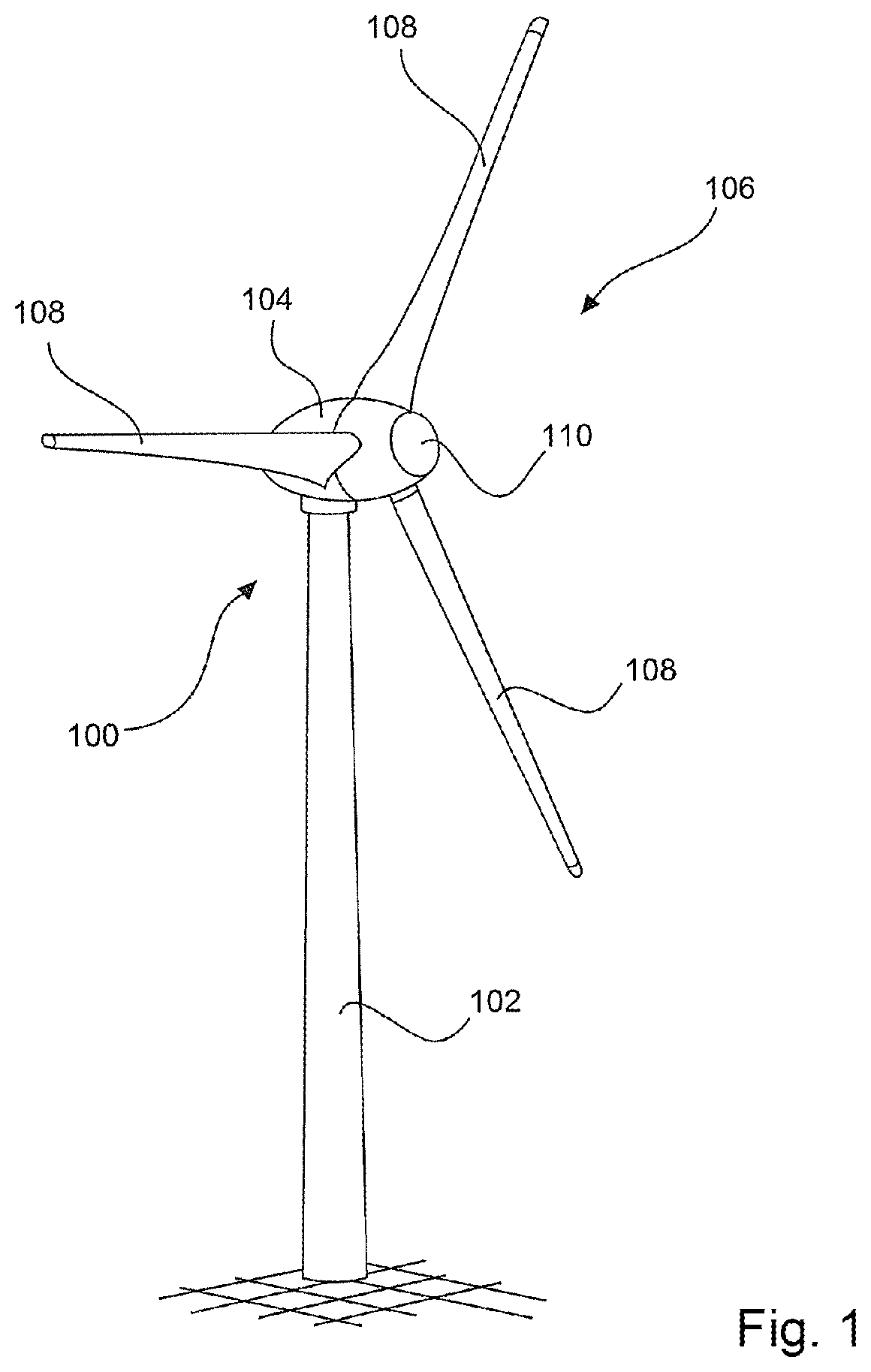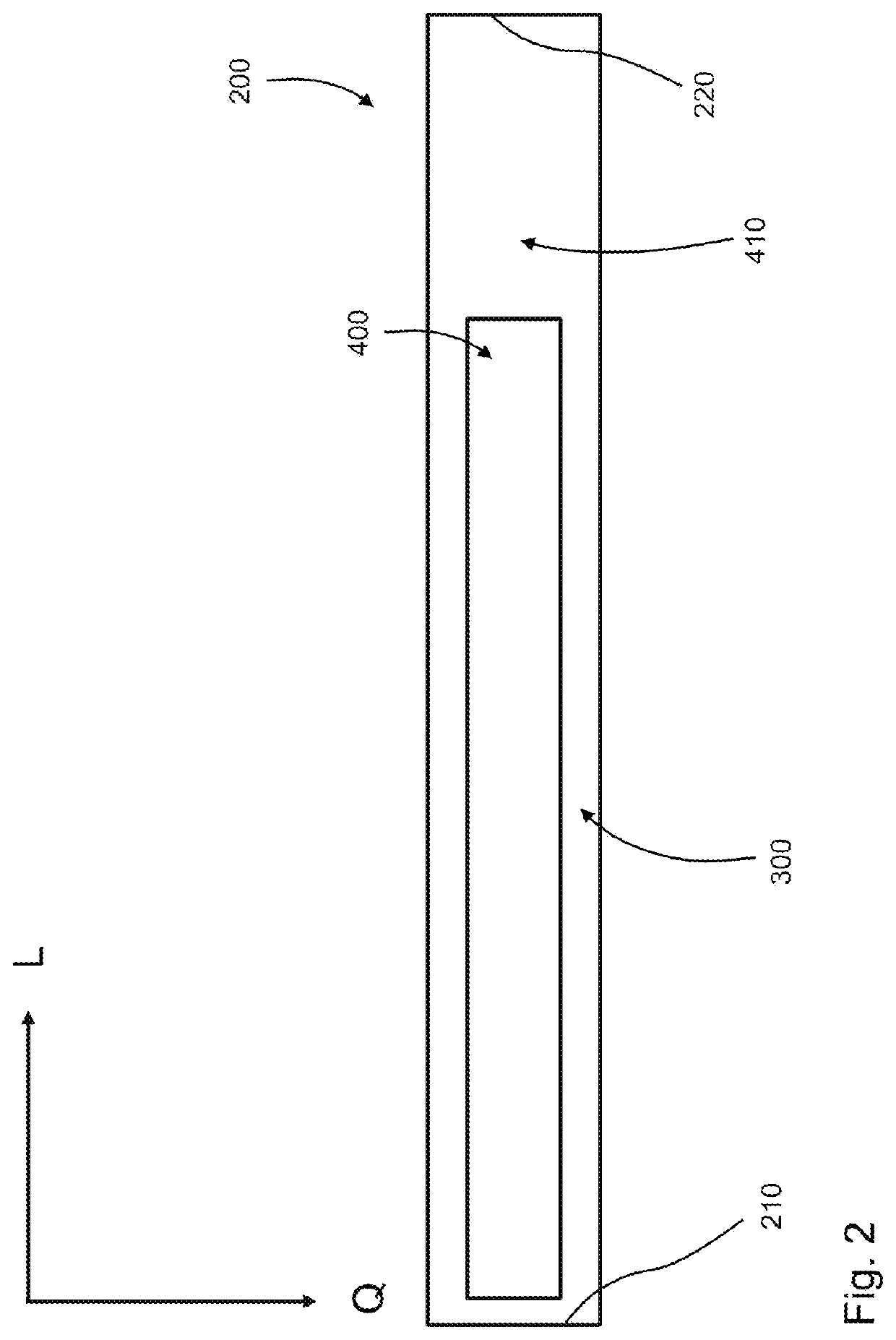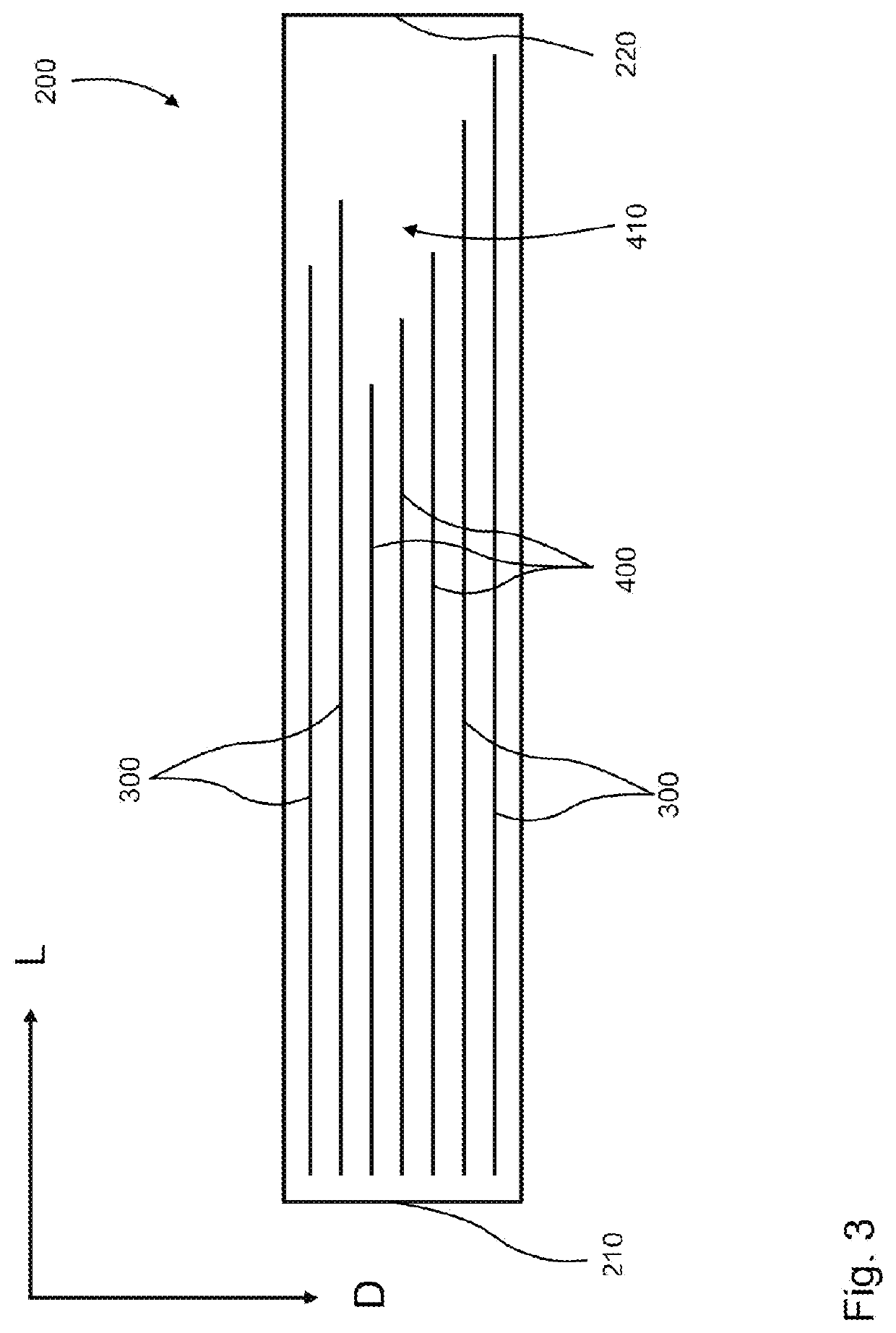Spar cap and production method
a production method and technology of spar caps, applied in the field of spar caps, can solve the problems of increasing the mechanical stress of individual components, the risk of being struck, and the risk of lightning striking the supporting structure of the wind power installation, so as to reduce the thickness of the spar cap along the longitudinal direction
- Summary
- Abstract
- Description
- Claims
- Application Information
AI Technical Summary
Benefits of technology
Problems solved by technology
Method used
Image
Examples
Embodiment Construction
[0083]FIG. 1 shows a schematic illustration of a wind power installation. FIG. 1 shows a wind power installation 100 having a tower 102 and a nacelle 104. A rotor 106 having three rotor blades 108 and a spinner 110 is disposed on the nacelle 104. The rotor 106 in operation is set in rotary motion by the wind and on account thereof drives a generator in the nacelle 104.
[0084]Spar caps 200 according to the invention are used in particular for the longitudinal reinforcement of the rotor blades 108. For this purpose, at least one spar cap 200, preferably two spar caps 200, are disposed in the interior of the rotor blade 108 and are preferably fastened to a side facing the interior of the rotor blade 108.
[0085]FIG. 2 shows a schematic cross-sectional view in the direction of a longitudinal extent L and transverse extent Q of a spar cap 200. The spar cap extends longitudinally along the longitudinal extent L thereof from a first end 210 to a second end 220. The first end 210 preferably re...
PUM
| Property | Measurement | Unit |
|---|---|---|
| width | aaaaa | aaaaa |
| thickness | aaaaa | aaaaa |
| width | aaaaa | aaaaa |
Abstract
Description
Claims
Application Information
 Login to View More
Login to View More - R&D
- Intellectual Property
- Life Sciences
- Materials
- Tech Scout
- Unparalleled Data Quality
- Higher Quality Content
- 60% Fewer Hallucinations
Browse by: Latest US Patents, China's latest patents, Technical Efficacy Thesaurus, Application Domain, Technology Topic, Popular Technical Reports.
© 2025 PatSnap. All rights reserved.Legal|Privacy policy|Modern Slavery Act Transparency Statement|Sitemap|About US| Contact US: help@patsnap.com



